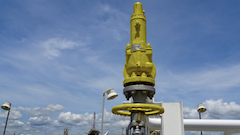Thermal Fatigue is a specific type of fatigue failure mechanism that is induced by cyclic stresses from repetitive fluctuations in the temperature of equipment. The degree of damage is affected by the magnitude and frequency of the temperature swings. Damage typically appears in the form of one or more cracks at the surface of the component. Unless remedied, cracks may propagate through the material eventually leading to failure.
Free eBook: Click here to download a more detailed overview of Thermal Fatigue.
All materials of construction and several types of units and equipment can be affected by thermal fatigue. A few include:
- Hot and cold stream mixing points
- Areas where condensate and steam systems contact each other
- Coke drum shells and skirts
- Steam generating equipment
- High temperature superheater and reheater tubes
Prevention, Inspection & Mitigation
The best way to prevent failure due to thermal fatigue is to minimize thermal stresses and cycling in the design and operating of equipment. Reducing stress raisers, controlling temperature fluctuations (especially during shutdown and start-up), and reducing thermal gradients can help prevent thermal fatigue. Taking proactive measures to prevent cool liquid from touching hot boundary walls, e.g. installing liners or sleeves, can also prove effective. This event occurs as products travel downstream from one processing unit to the next where successive units may operate at various temperatures.
Unfortunately, thermal fatigue cannot always be prevented. As a result, there are several ways to inspect for and mitigate thermal fatigue, including:
- Visual inspection, liquid penetrant testing (PT), and magnetic particle testing (MPT) for inspection of equipment surfaces.
- Surface wave ultrasonic testing (SWUT) and other ultrasonics can be utilized as non-intrusive methods of testing for internal cracks.
Related Topics
- Brittle Fracture
- Carburization
- Cavitation
- CO2 Corrosion
- Cooling Water Corrosion
- Corrosion Fatigue
- Corrosion Under Insulation (CUI)
- Cracking
- Decarburization
- Embrittlement
- Erosion Corrosion
- Fatigue (Material)
- Flue Gas Dew Point Corrosion
- Graphitization
- Green Rot
- High Temperature Hydrogen Attack (HTHA)
- High-Temperature Creep
- Hydrochloric (HCl) Acid Corrosion
- Hydrofluoric (HF) Acid Corrosion
- Hydrogen Embrittlement
- Hydrogen Stress Cracking
- Liquid Metal Embrittlement (LME)
- Metal Dusting
- Microbiologically Influenced Corrosion (MIC)
- Naphthenic Acid Corrosion (NAC)
- Phosphoric Acid Corrosion
- Pitting Corrosion
- Spheroidization (Softening)
- Stress Assisted Corrosion
- Sulfidation Corrosion
- Sulfuric Acid Corrosion
- Vibration-Induced Fatigue
- Wet H2S Damage
Relevant Links
Topic Tools
Share this Topic
Contribute to Definition
We welcome updates to this Integripedia definition from the Inspectioneering community. Click the link below to submit any recommended changes for Inspectioneering's team of editors to review.
Contribute to Definition


























